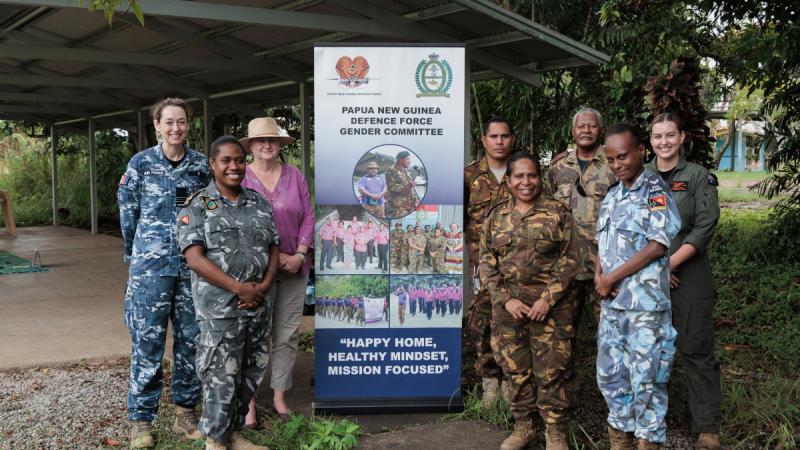A trial is under way to test if dry-firing with a ‘Fitbit for shooting’ can improve soldiers’ live-fire skills.
Personnel from 7 Brigade are undertaking a four-week training program using the MantisX training system to test its suitability for Australian forces.
The device uses a sensor mounted on a weapon to track barrel movement, trigger pull and weapon stability, then delivers a score and barrel vector for each shot, similar to the Weapon Training Simulation System.
Warrant Officer Class Two (WO2) Mark Biviano, of Land Combat Faculty, bought a MantisX in 2016 to help improve his competitive pistol shooting and soon realised it’s potential for Defence.
In 2019 he ran a proof-of-concept program using MantisX at 13 Brigade and said the immediate feedback, coaching and shared network of data resonated with the group.
“The users demonstrated a significant improvement very quickly because of that very short learning loop; you press the trigger and you see feedback,” WO2 Biviano said.
“This device and application are the shooting version of Fitbit or Strava, where for every rep in the gym and step on the run you get immediate feedback.
“With MantisX, whether it’s dry-fire, live-fire or non-lethal training ammunition, every trigger press counts and data is stored against your profile so shooters can see how they’re progressing.”
‘This device and application are the shooting version of Fitbit or Strava.’
He took the idea to Jemma Coleman, of Defence Science and Technology Group (DTSG), who agreed the system had potential.
“DSTG have been providing ongoing support to the human factors components of weapon design since the introduction into service of the EF88. This device has the potential to give Defence operators a better feedback loop whilst undertaking training drills,” Ms Coleman said.
“At the moment, test and evaluation trials mainly focus on accuracy and timing, usually using static drills on weapons ranges. They don’t take what is happening to the human into consideration.”
The trial started on April 22 with baseline dry and live-fire testing of participants from three groups of soldiers: non-combat corps, combat corps and infantry.
Following the training program, using only dry-firing with feedback from MantisX, shooters will be re-tested to see if it has improved their live-fire ability.
The study will also use 150-image-a-second motion capture to detail what their bodies and weapons are doing.
The trial is a joint effort between DSTG and La Trobe University, funded through the Land 159 weapons replacement program.
Lead academic for the trial, Kane Middleton from La Trobe, said dry-fire training could mitigate the cost and resources of shooting at a range and still provide skill improvement.
“MantisX really provides an opportunity to be able to put the sensor on any weapon, dry-fire in a hallway wherever you want in your barracks and start training,” Dr Middleton said.
“It’s no use training on dry-fire but only improving in dry-fire. We want to see if there’s any transfer of skill to make sure you can actually improve with live-fire.”
The trial will also study how soldiers take in, and act on, information during room clearances, a concept called ‘perception-action coupling’.
“If we find that expert shooters look and move in a certain way, it might give us information about how they actually perceive the environment and then act,” Dr Middleton said.
“Then we can try and inform training practices to foster those perception-action behaviours associated with skilled combat shooting performance.”






